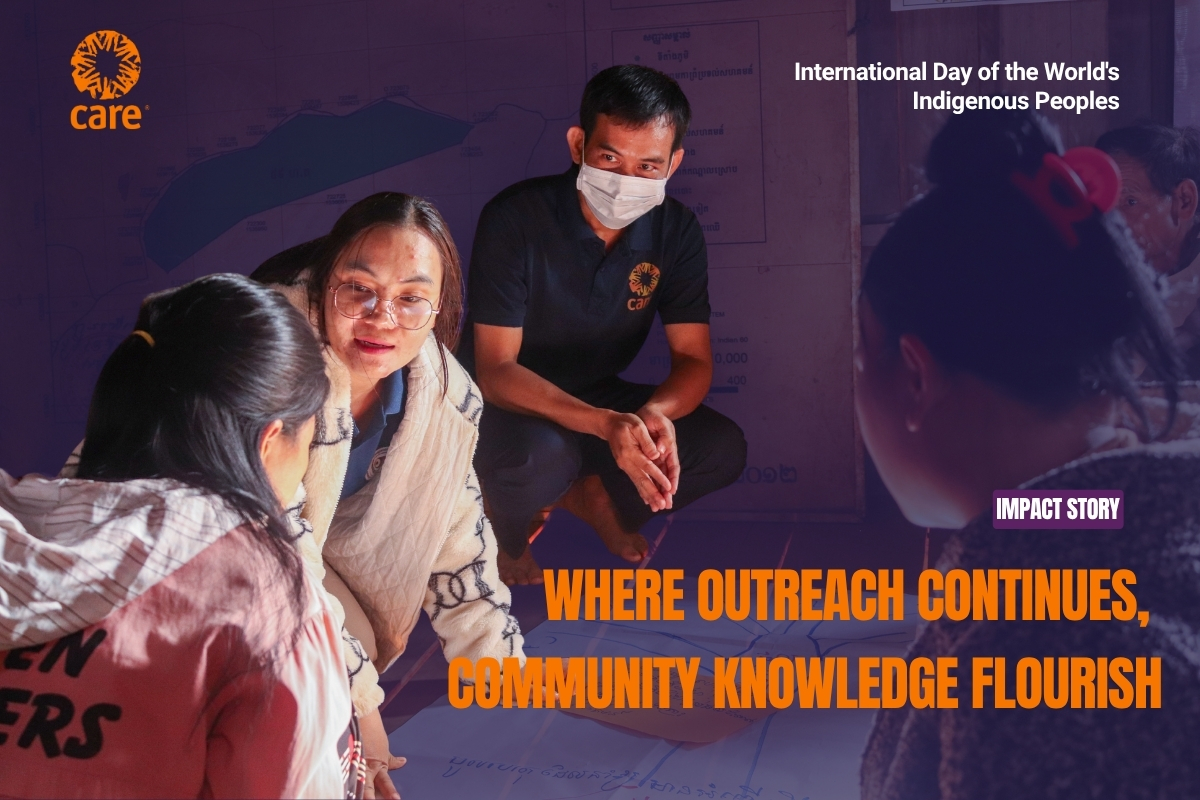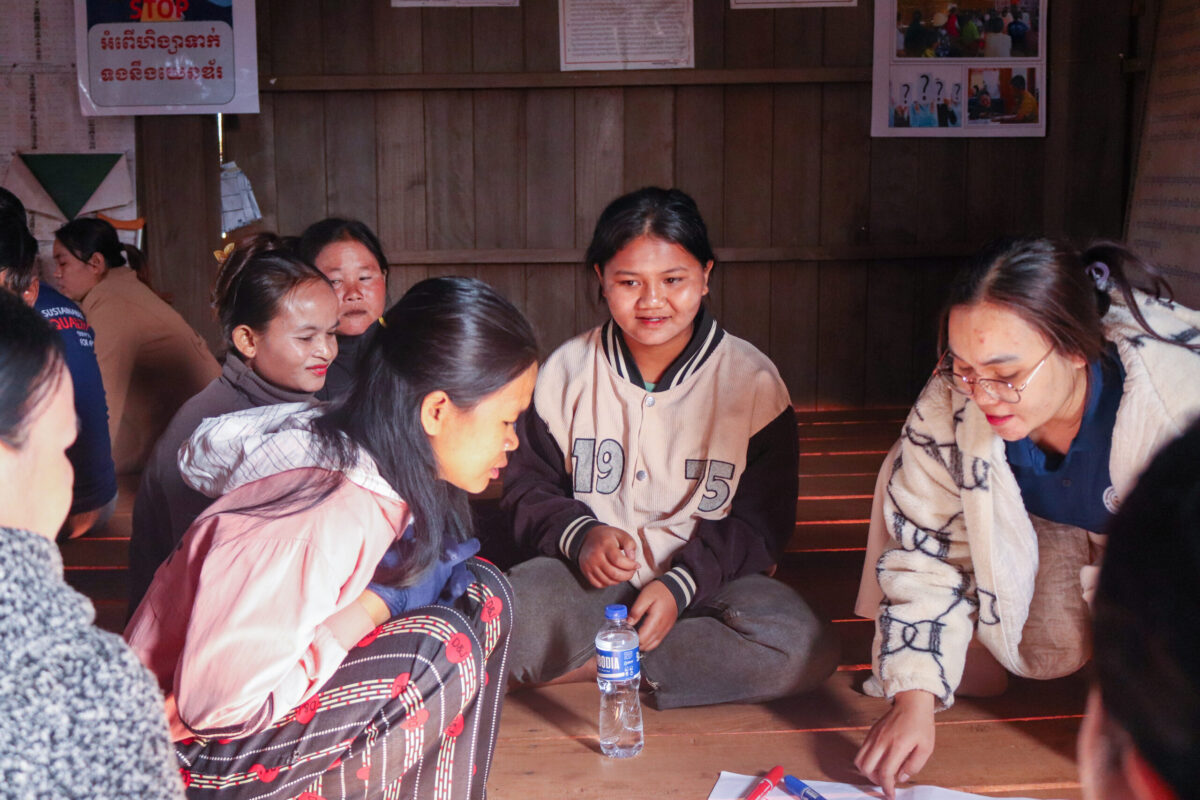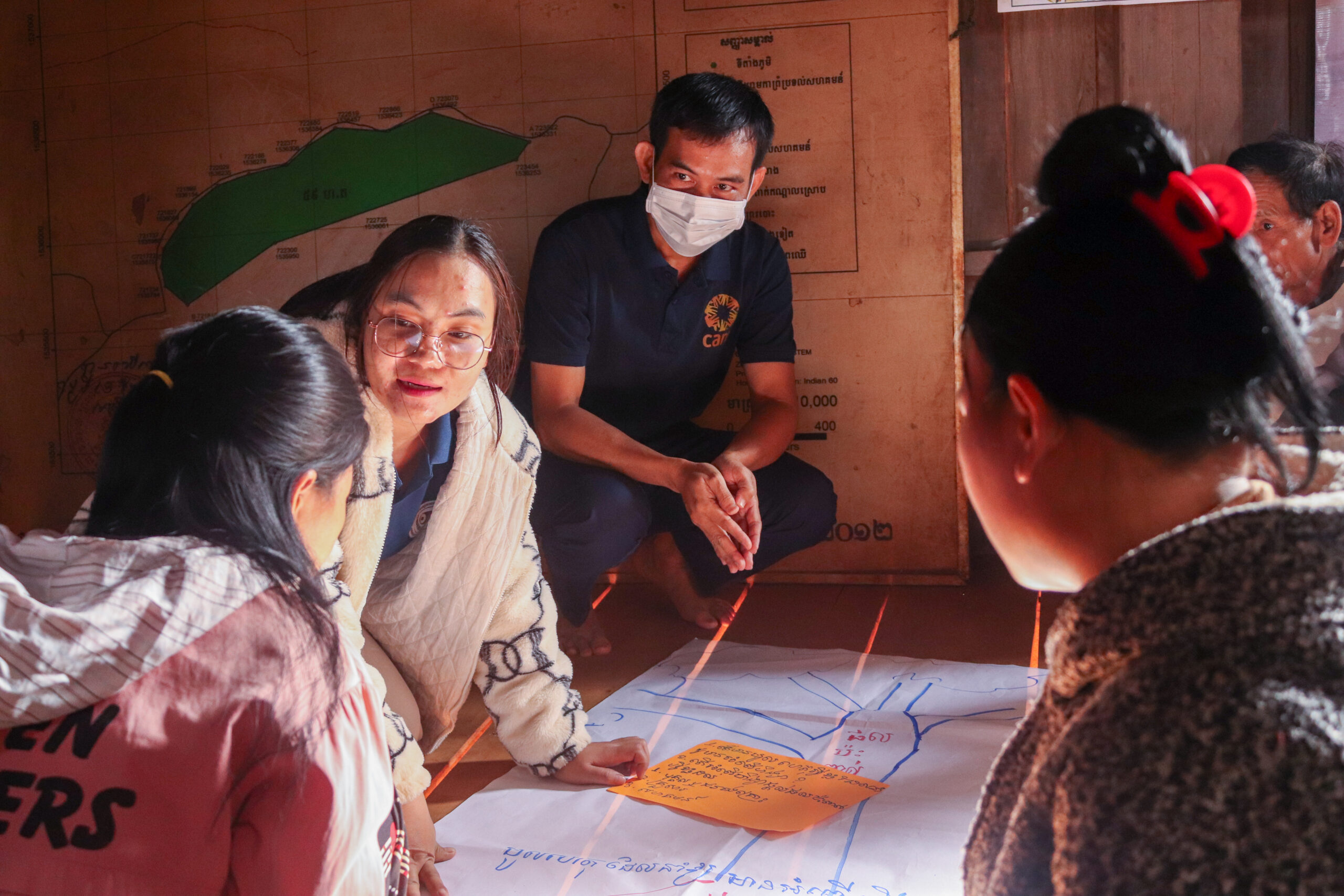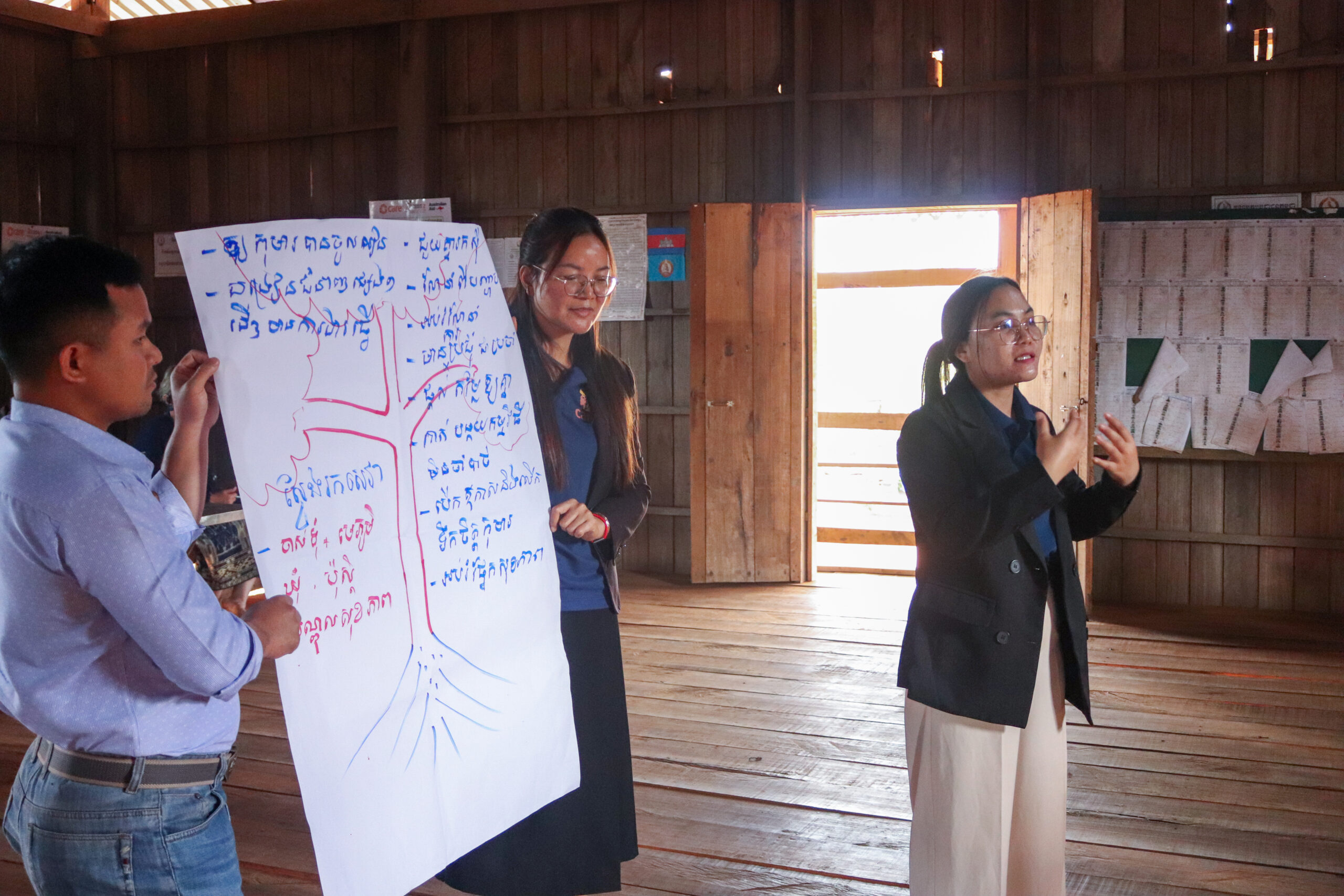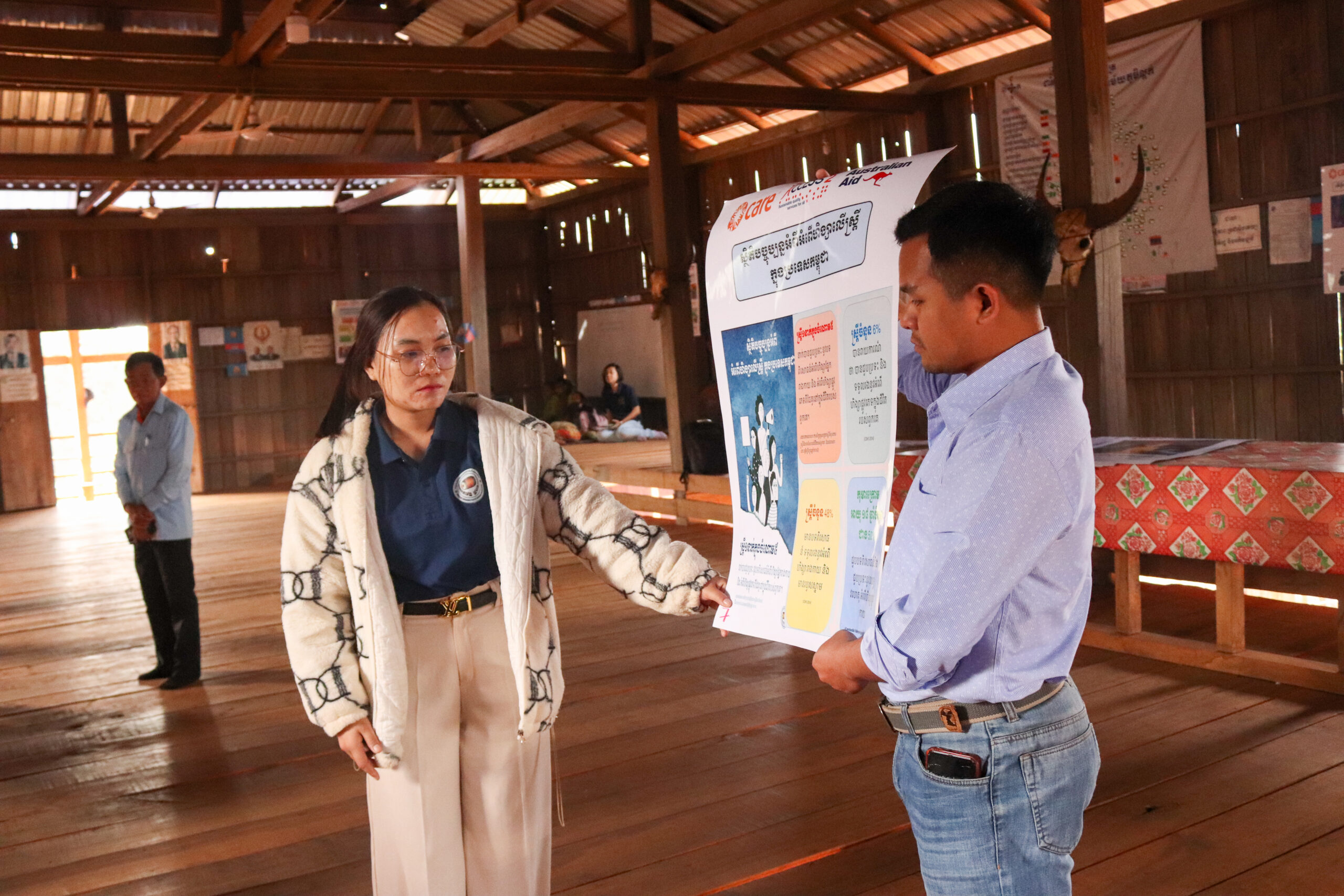About 90% of the Indigenous communities in Cambodia reside in Ratanakiri province. Characterized by a significant presence of Indigenous communities where languages and culture intertwine, the communities face unique cultural and social challenges. At a community dialogue in Ou Chum district, a young Brao facilitator translated Kreung language to Khmer and vice versa as she facilitated the session with her colleague on Gender-based Violence (GBV).
Daeng Sokhim was a project coordinator and community volunteer at the Conserve Indigenous Peoples Languages Organization or CIPL. Speaking languages of Brao, Khmer, and Kreung, she translated Khmer language training materials into the Indigenous language at the community hall and further explained the “Problem Tree” exercise, which focused on root causes and issues of the GBV in the community. Sokhim has conducted several community dialogues across nine districts where the project is implemented.
Sokhim started her journey as a volunteer youth interest in using media to report community issue and later became a facilitator for Community Dialogue, focuses on raising GBV awareness. In her role at the time, Sokhim supported in planning the dialogues, communicating with authority and site mapping to ensure safety of participants.
“During the dialogue, I facilitate language translation to ensure the discussion is clear for participants. I also lead the discussion and questions where necessary,” she said. Her facilitation skills ensure that the awareness on the GBV issue is well informed and communicated to the participants who come from diverse Indigenous communities.

